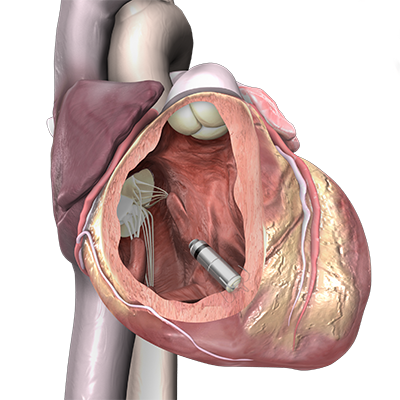What is a leadless pacemaker?
Heart Health
Savannah Cardiologist Dr. Michael Chisner explains this tiny device that helps your heart beat normally
It’s estimated nearly three million Americans live with a pacemaker. Some may use a newer type of pacemaker that requires less equipment in the body and can be a less invasive procedure. It’s called a leadless pacemaker.

A pacemaker is used when the heart beats too slowly. Medication alone is typically not a good option for a slow heartbeat so your cardiologist may recommend a pacemaker.
Traditionally, and most commonly, a pacemaker has a battery (like a generator or computer) that is placed near the collarbone underneath the skin, explains Dr. Michael Chisner, a cardiologist and electrophysiologist with St. Joseph’s/Candler Physician Network – Cardiology Associates of Savannah. To get a signal from the pacemaker to the heart, there are wires, or leads, that run from the pacemaker to the heart. Usually, you have anywhere from one to three leads going to the heart, Dr. Chisner says.
A leadless pacemaker looks like a little twig that sits inside the heart and that is the pacemaker itself, without the need for leads, explains Dr. Chisner. The device is implanted within the heart using a catheter (a long, thin tube) from a vein in the groin. The procedure takes about an hour and most patients go home that day. It does not require an incision in the chest like a traditional pacemaker, making it somewhat less invasive.

The leadless pacemaker has been in use for about three years and currently is only placed in the right ventricle. Therefore, it’s not for everyone. If your heart beat is so slow that it requires dual chamber pacing, then you’d need a dual-lead pacemaker or a biventricular pacemaker that paces both ventricles at the same time.
A leadless pacemaker can be beneficial, however, for patients that are at risk of having an incision in the chest or a foreign object in the body. It can also be ideal for patients with poor veins, such as dialysis or cancer patients.
“The goal of all pacemakers is to try to maintain the heart from beating too slowly,” Dr. Chisner says. “Some people may need pacemakers infrequently or for short periods of times, but typically if you have a need for a pacemaker that need doesn’t go away.”
“I do think the technology will continue to improve and things will get smaller, last longer and somewhat be simpler.”